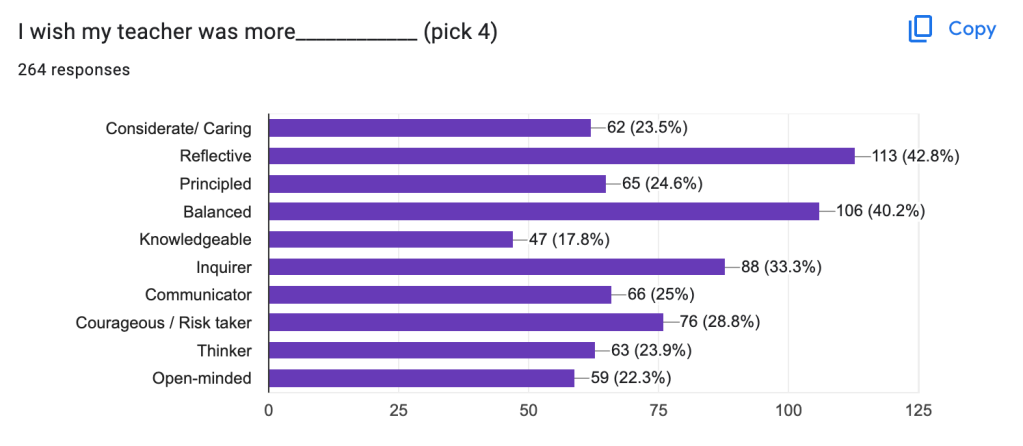“The reflective process is a complex one in which both feelings and cognition are closely interrelated and interactive”
(Boud, et al, 1985:20)

In the early stages of my teaching career, the discovery that my young learners were capable of reflective thinking was eye-opening. Since then I have made significant attempts to work in ongoing reflection for my students on their learning. From dedicated times during the school week such as Reflective Fridays where we routinely reflected on the past week of learning, to reflective video posts on Seesaw following each learning engagement. Ideally, I was fostering a very reflective group of learners each year. But how reflective was I being as a professional? What avenues could I create for authentic feedback from my learners that would help me grow as a life-long learner?


I consider this student survey one of the most successful and reliable forms of feedback I have yet to receive on student understanding of the learner profile attributes. Students know the least about what it means to be reflective, alluding that their teachers are not reflective themselves and need to be!
At some point during my post-graduate learning, we explored the possible profile of who would be considered a good teacher. I was drawn to a post (I still cannot remember or find where this idea was first proposed) that explored the attributes of good teaching based on the attributes of the IB learner profile. This stuck with me and has been reverbing in my mind since. By virtue of leading by example, I used this idea to design both my teaching and leading report cards;
Going back to full-time teaching two years ago gave me the opportunity to put into practice some of the ideas I had conceived during my professional inquiry for my post-graduate program. I have sent out this survey for two consecutive years; the first to just students and the second year to both students and their family contacts. The feedback I received on how caring I was as an instructor (good but still lowest of all the attributes) made me reflect on whether I was doing enough to build a caring classroom environment where every student felt seen, heard, respected and valued.
The spark came from conferring one-on-one with students for their goal-setting process. Students valued this time with just them talking about their goals and challenges. Students who ideally would never share personal information started doing so in these sessions. I sought to work in more of these regular check-ins during the week to just talk about their week, however brief. Moving from a group approach towards being a caring instructor to a more personal view of my students thoughts and feelings about living and learning. I am yet to see how this small yet vital gearshift reflects on their feedback in my next teacher report card! Follow for an update!









